Amazing artefacts found on shipwrecks
Rolling in the deep
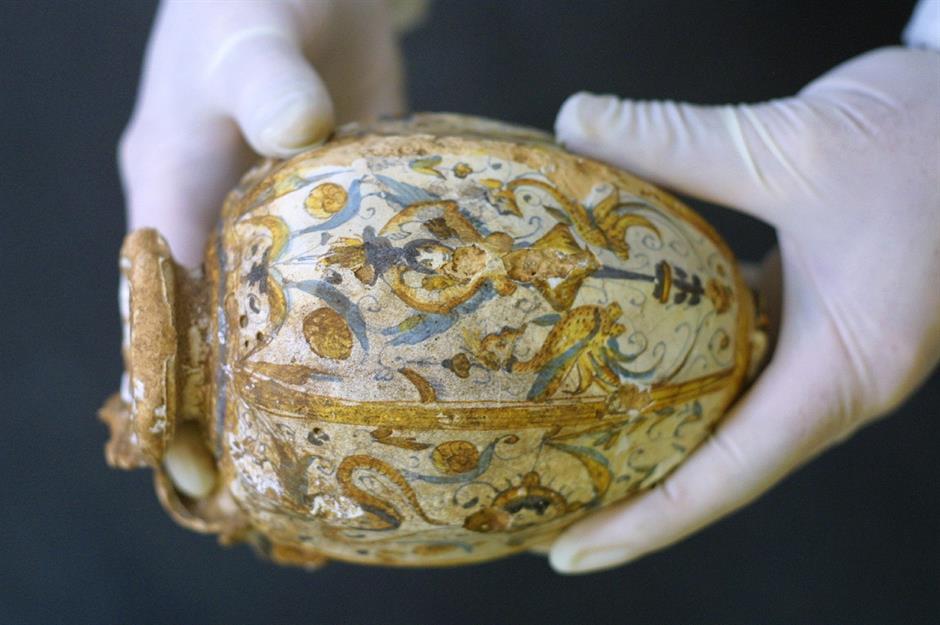
Shipwrecks themselves are a rare find, and it’s even better when maritime archaeologists dig up valuable treasures buried in the murky depths. Over the years, scuba-diving excavators have found countless objects that tell us a huge amount about life on board ships and the wider world that sailors lived in.
Click through the gallery to discover some of the most spectacular finds ever discovered aboard ill-fated vessels...
Wallace Hartley’s violin, RMS Titanic

Perhaps the most famous shipwreck fact of them all is that the musicians continued playing as the Titanic sank in 1912. Wallace Hartley was one of those musicians, and after finishing his last note he allegedly put his violin in a case and tied it around himself – possibly to help his buoyancy. Tragically, it didn’t help him survive and Hartley froze to death in the Atlantic Ocean.
The case was pulled from the water with his body and his violin was returned to his fiancée – it’s now an eerie reminder of the Titanic disaster, housed in the Titanic Museum in Pigeon Forge, Tennessee.
18th-century beer, Sydney Cove
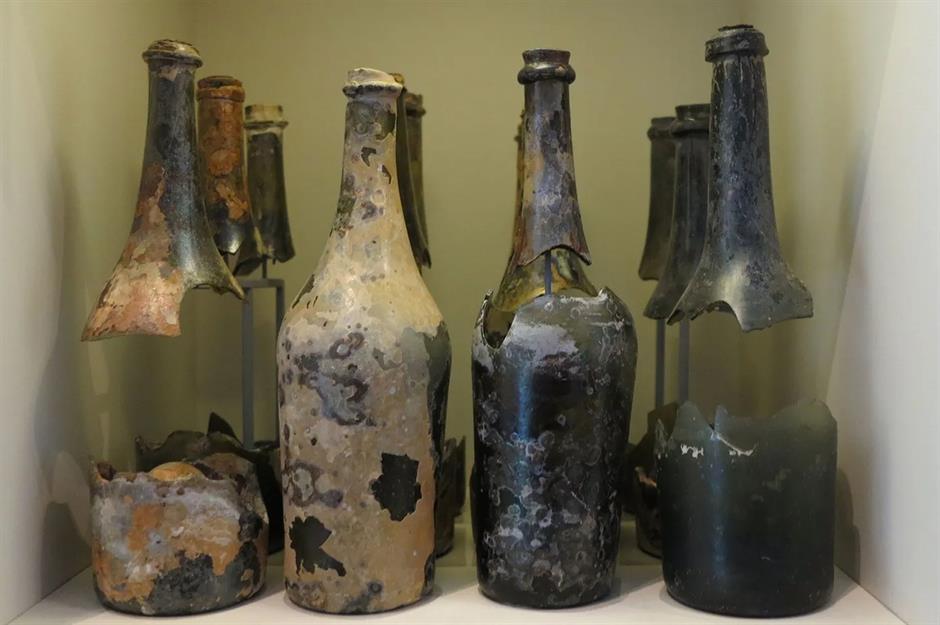
The merchant vessel Sydney Cove sank off Tasmania in 1797, and the water was so cold that sealed glass bottles pulled from the wreck in the 1990s contained beer with still-usable yeast – a rare strain no longer used by brewers. It was used to brew a new batch of booze, which would have tasted familiar to Sydney Cove’s sailors more than two centuries ago.
The wreck’s artefacts are kept in the Queen Victoria Museum and Art Gallery, where visitors can purchase a bottle of Wreck Preservation Ale.
Petit blanc, Newport Ship
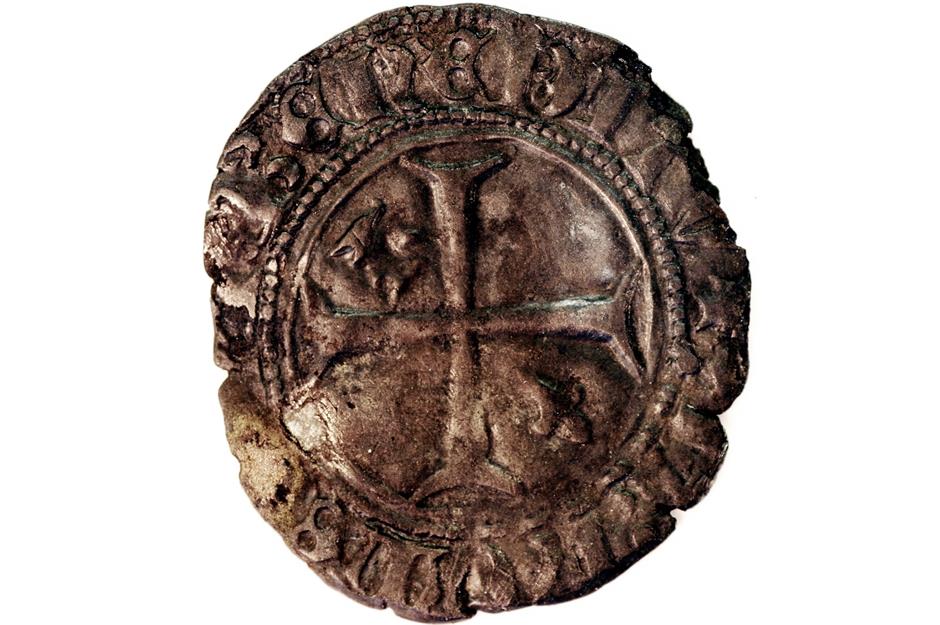
The Newport Ship, an unidentified 15th-century wine trader, was found on the banks of the River Usk near Newport, Wales in 2002. One of the most poignant artefacts found in it was a small French coin, a petit blanc, stuffed into the keel. It’s thought to have been put there for luck, since a vessel with no cash on it was superstitiously doomed to founder.
Since the Newport Ship ended its life on a riverbank close to shore rather than at the bottom of the sea, the coin must have done its job. See it at Newport’s Ship Centre.
Antikythera mechanism, Antikythera Wreck
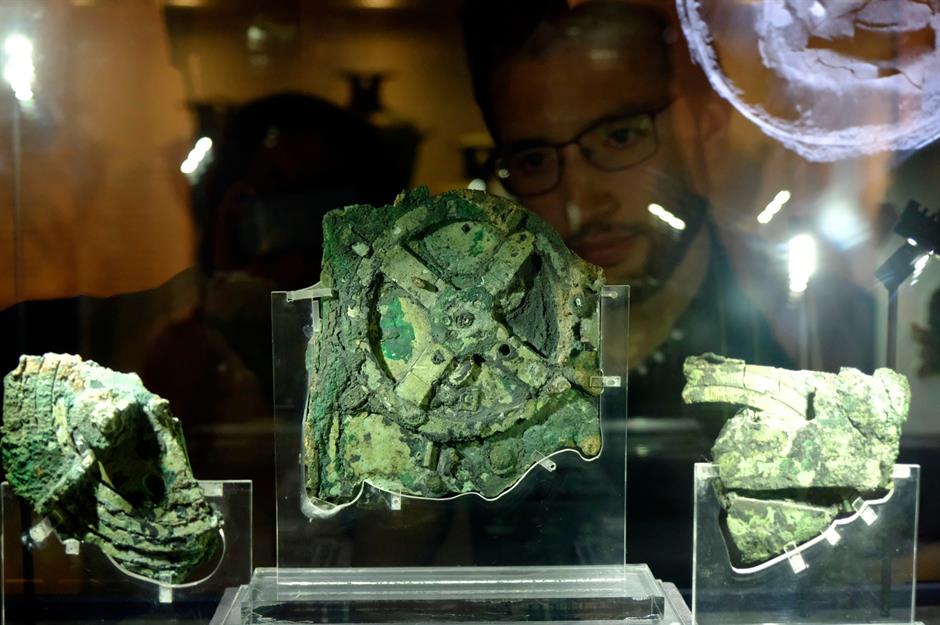
When a Roman ship sank off the coast of the Greek island of Antikythera in the 1st century BC, one of the ancient world’s most stunning objects went with it. The Antikythera mechanism, found by sponge divers in 1901, is a hand-powered model of the solar system that accurately tracks the position of the planets.
Romans probably used it to predict astronomical events and keep time. Considered the world's earliest known analogue computer, it's now on display at the National Archaeological Museum in Athens.
Gold, SS Central America

It’s for good reason that the sidewheel steamer SS Central America is known as 'the Ship of Gold'. She sank during a storm in 1857 while plying her regular route between Panama and New York, and went down with over nine tonnes of gold on board. It had a value of $8 million (equivalent to $550 million/£457 million today), and the fallout contributed to the financial panic that caused a run on the world’s banks.
The wreck was found in 1988 and, after several legal battles, the valuable cargo was brought to the surface.
Silver ingots, SS Gairsoppa
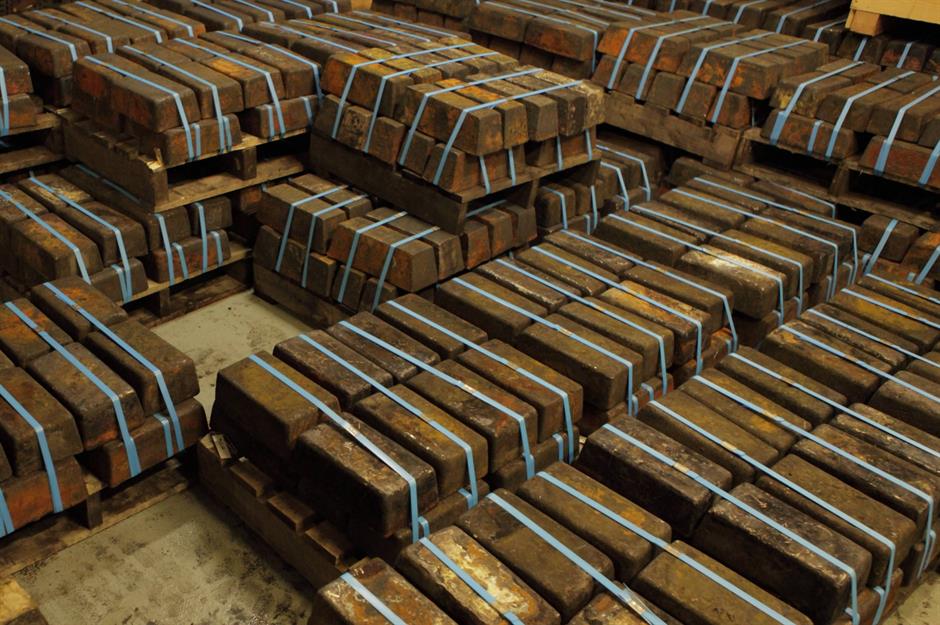
British merchant steamship Gairsoppa sailed the world’s seas for more than 20 years before she sank, torpedoed by German U-boats lurking off the coast of Ireland in 1941. Aside from the tea and iron in her hold, she also had a valuable cargo of 200 tonnes of silver bullion bound for the UK's Royal Mint.
A salvage company spotted the Gairsoppa’s final resting place in 2011 and over the next two years lifted £150 million ($180m) of silver from the seabed.
Dice, Mary Rose
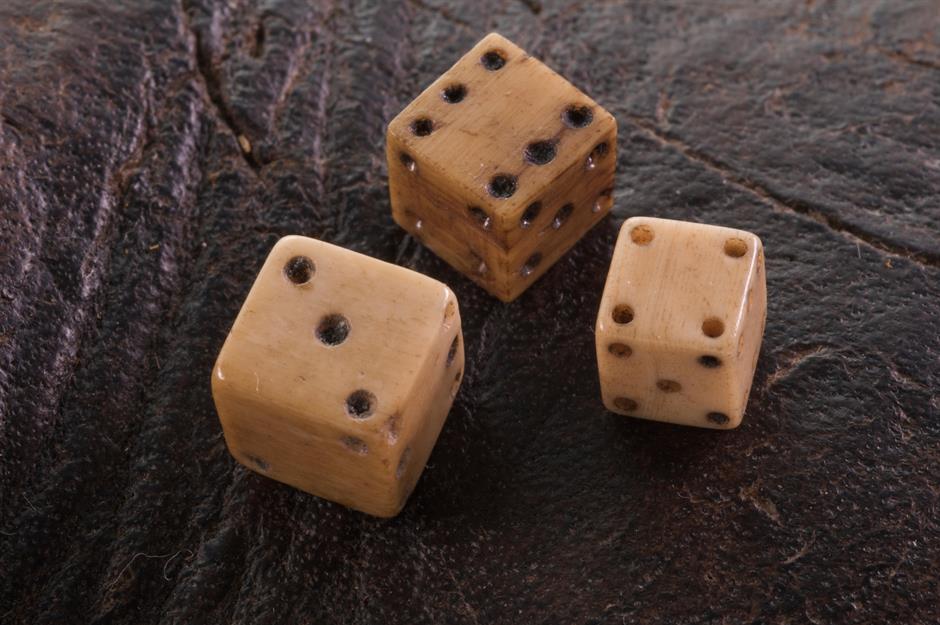
The Mary Rose was the pride of Henry VIII’s fleet, so we can only imagine how the infamously ill-tempered king reacted when it sank before his eyes during the Battle of the Solent in 1545. The wreck was raised in 1982 and is now the centrepiece of its own dedicated museum in Portsmouth.
Among thousands of artefacts are these tiny gaming dice, the smallest measuring just 4.8mm (0.2 inches) across – possibly small so they could be easily hidden, since gambling was frowned upon in Tudor England.
Amphorae, Albenga wreck

These storage jars from the Roman era had distinctive pointed bottoms and were pretty useless when standing by themselves. But it’s a great design for carrying and storing in bulk, like on the Albenga. This Roman ship went down in the 1st century BC and was discovered in 1950 – it contained more than 10,000 amphorae, many containing wine from Campania destined for the markets of southern France and Spain.
Find a selection of the jars at the Roman Naval Museum of Albenga.
17th-century vase, Kinlochbervie wreck

When divers discovered expensive 17th-century Mediterranean pottery in a shipwreck off the coast of Scotland in 1998, they couldn’t help wondering if they’d found one of the many ships of the Spanish Armada that were scattered by the winds after attempting an invasion of England in 1588.
Their theory has yet to be proven correct, but what’s certain is that this vase pulled from the silt is one of the most stunning shipwreck artefacts found off the coast of Britain. It's currently in the care of National Museums Scotland.
Bronze Age cargo, Uluburun wreck

The shipwreck found off the coast of Uluburun, Turkey is one of the oldest ever discovered – it dates to the 14th century BC. Although the cedar hull had all but disappeared, a full load of cargo still lay in the silt. It included copper, glass and tin ingots, at least 149 jars and a host of miscellaneous finds including jewellery, weapons and a trumpet made from a hippopotamus tooth – a real treasure trove of Bronze Age artefacts.
There’s an entire hall dedicated to the Uluburun wreck at the Bodrum Museum of Underwater Archaeology.
Gold coins, Nuestra Señora de las Mercedes
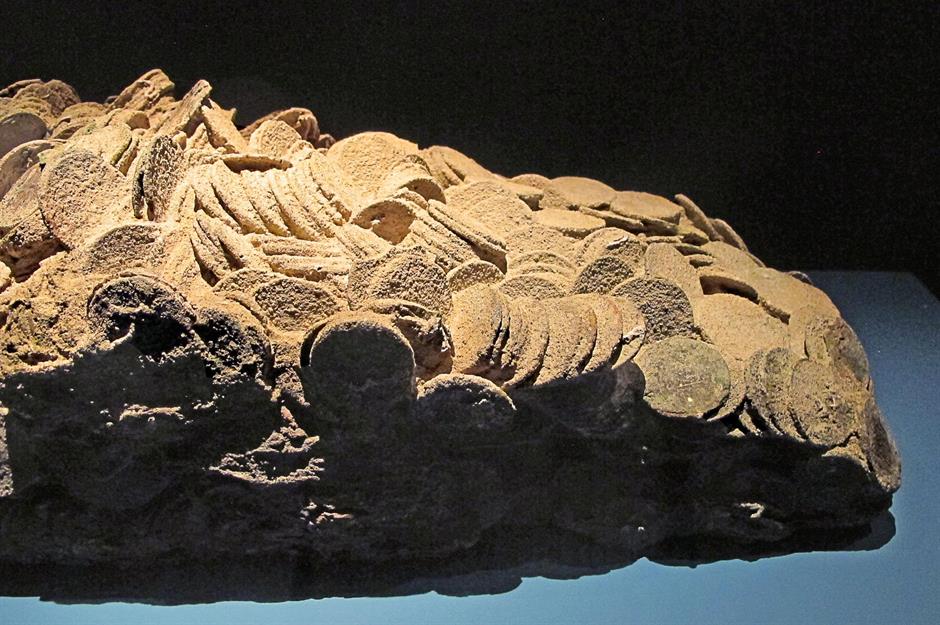
Spanish frigate Nuestra Señora de las Mercedes was sailing off the south coast of Portugal in 1804 when a single British cannonball struck the ship’s gunpowder magazine, condemning 250 sailors to a watery grave. The wreck was discovered by an American salvage company in 2007 and 500,000 gold and silver coins were raised from the deep, but a legal challenge by the Spanish government forced them to return the loot to Spain.
The treasure is currently in the National Museum of Subaquatic Archaeology in Cartagena in Spain.
42-pound cannon, HMS Victory
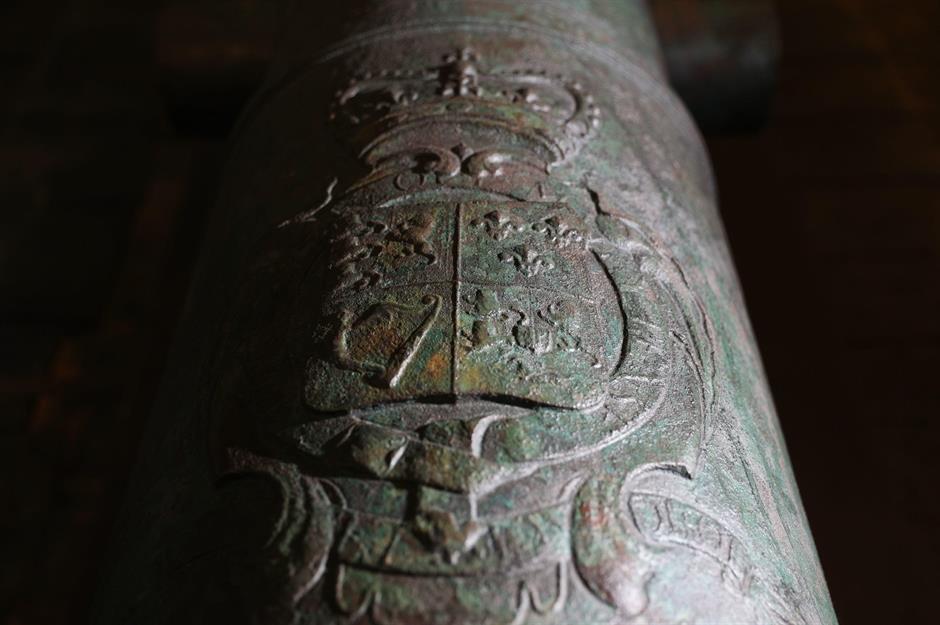
The notoriously unstable HMS Victory, a British Royal Navy ship launched in 1737, was lost during a storm in the English Channel in 1744, sinking with approximately 1,100 souls on board. She was eventually located in 2008, and a 42-pound cannon embossed with the crest of King George I was used to positively identify her.
It’s now on display in Portsmouth Historic Dockyard near HMS Victory’s successor, a new warship of the same name launched in 1764 and commanded by Admiral Nelson at the Battle of Trafalgar.
Pirate treasure, Whydah Gally
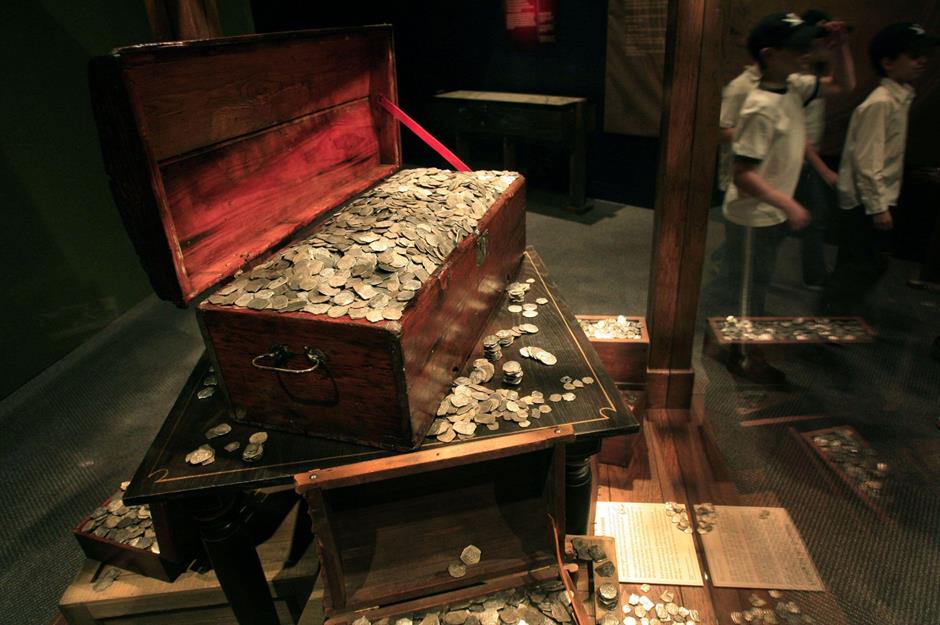
Whydah Gally was a 1715-built slave trade vessel, captured by notorious English privateer ‘Black Sam’ Bellamy in February 1717. He liked the vessel so much that he and his band of almost 200 men converted it into their flagship, but Whydah Gally’s crooked career didn’t last long. Less than two months later, she sank in a severe storm off Cape Cod, Massachusetts.
She was discovered by diver Barry Clifford in 1984 with her plunder – including chests full of coins – still on board. It’s the only salvaged pirate treasure in existence, and selected artefacts are permanently on display at the Whydah Pirate Museum in Yarmouth, Massachusetts.
Nazi tableware, SS Salzburg
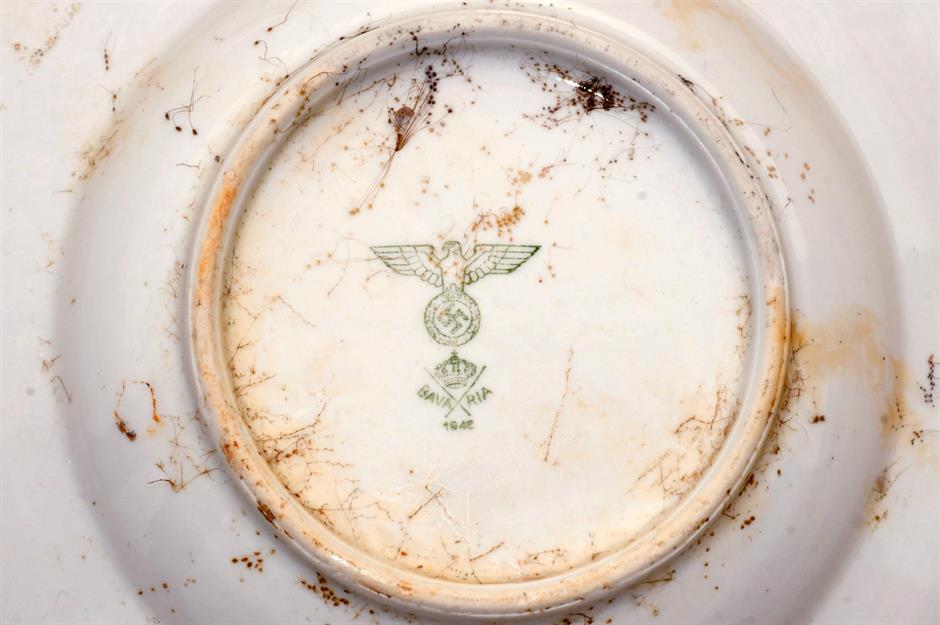
When German troop transporter SS Salzburg was sunk in the Black Sea by a Soviet submarine in October 1942, it was a poignant tragedy. The Soviet commander who ordered that the torpedoes be fired had no idea that the Salzburg was actually ferrying Soviet prisoners of war, more than 2,000 of whom died.
It’s now a site for wreck divers, and among the booty they have pulled from the seabed are items of tableware stamped with Nazi insignia.
Spear points, Kyrenia Ship

Diver Andreas Cariolou knew he’d discovered a significant site when he found an old ship off Kyrenia, Cyprus in 1965, lying 90 feet (27m) below the surface. Archaeologists got to work, and discovered that it was a merchant ship from the 4th century BC.
Among their finds were tableware, tools, almonds, sailor's sandals and even spear points in the hull – possible evidence that the ship sank in an attack. The ship and many of the artefacts she carried are now housed in the Kyrenia Castle Shipwreck Museum in North Cyprus.
Lutine Bell, HMS Lutine
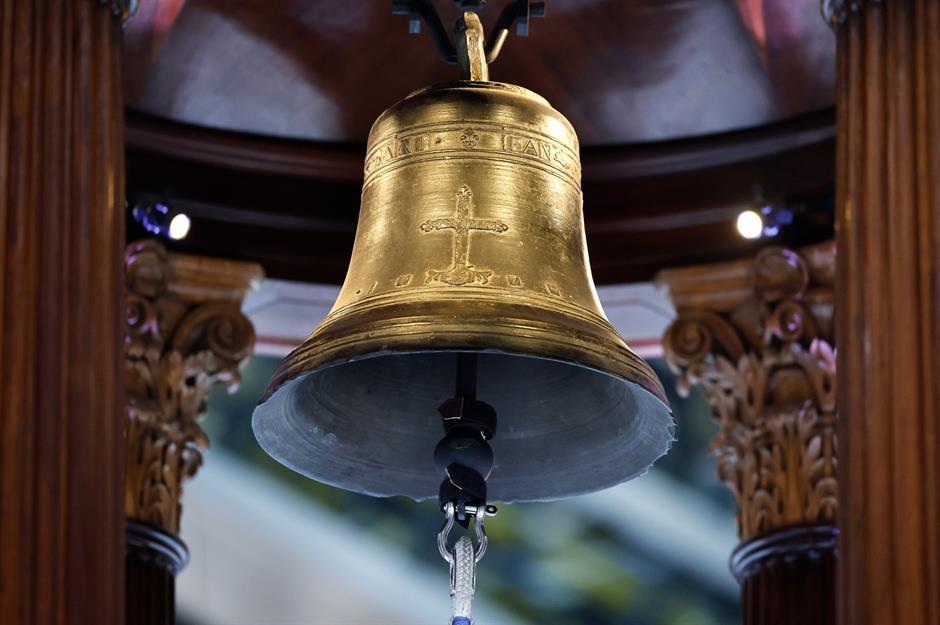
Originally a French frigate, Lutine was given to the British by French royalists during the French Revolution and served her new country for six years before sinking in a storm off the Dutch coast in 1799 with only one survivor. She carried a rich cargo of gold, but choppy waters mean most of it has never been recovered.
Salvagers did, however, recover Lutine’s bell in 1858. It still hangs in the offices of naval insurer Lloyds of London and used to be rung once to signal the sinking of a ship, or twice to ring in the safe return of a late vessel that was presumed lost.
Anchor, Queen Anne’s Revenge
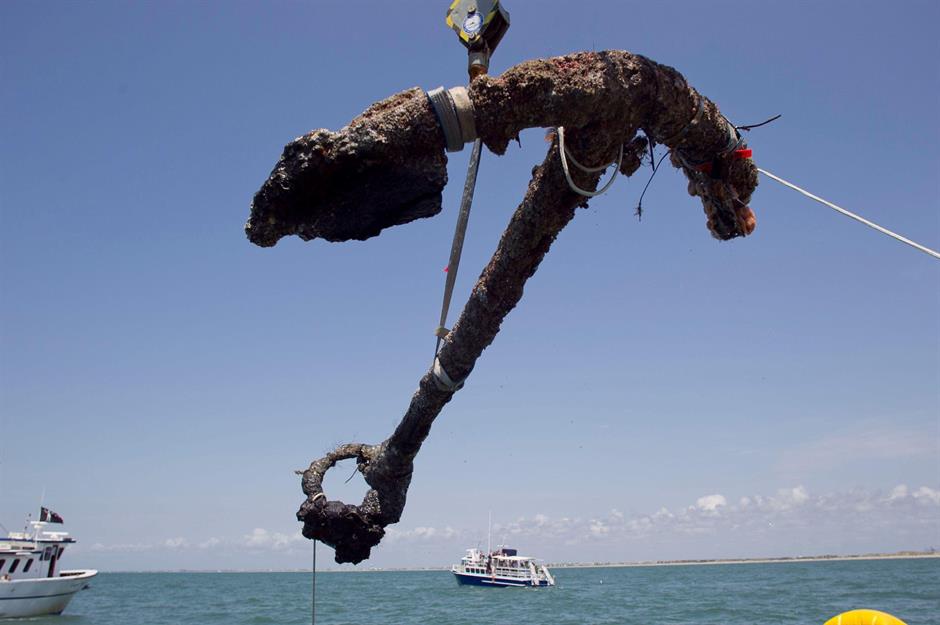
No pirate is more infamous than Blackbeard – and no ship is more infamous than his flagship, the Queen Anne’s Revenge. Infamous though she is, she only served as a pirate galley for less than a year before she ran aground off North Carolina and was abandoned and left to rot.
Maritime historians rediscovered her in 1996 and a long excavation followed, with her massive 2,000lb (907kg) anchor raised in 2011. See what else the pirates carried on board at the North Carolina Maritime Museum.
Navigation instruments, HMS Gloucester
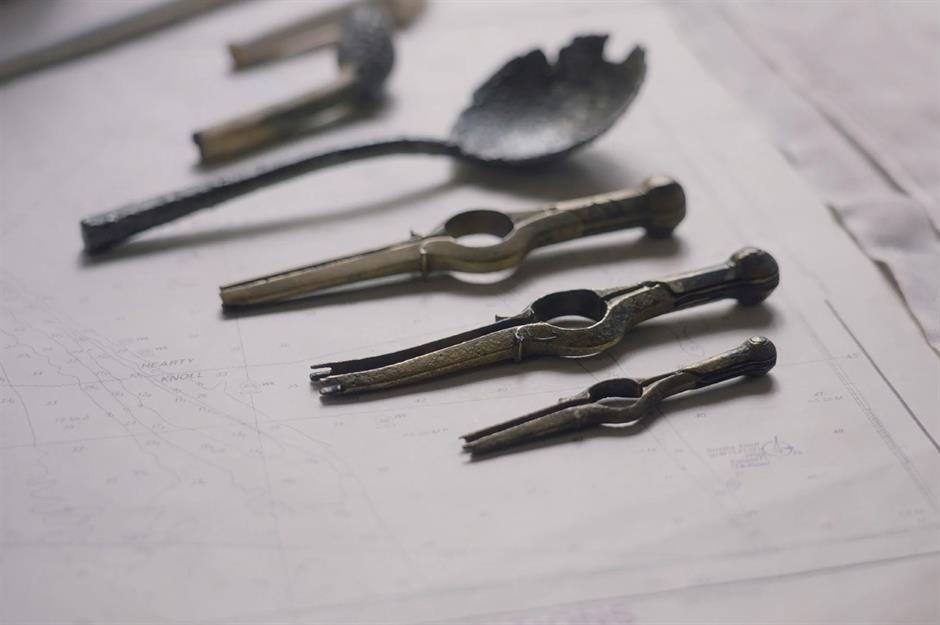
The Gloucester was selected to carry a VIP passenger from Kent to Scotland in 1682: James, Duke of York (the brother and nominated successor to King Charles II). Unfortunately, the Gloucester’s officers disagreed about the best route to take. They made the wrong choice: the ship blew onto a sandbank and sank, killing as many as 250 people, though the Duke survived.
The wreck was found in 2007 and among the artefacts salvaged were these navigational instruments, currently on display in Norwich Castle Museum.
Gold dollars, SS Republic
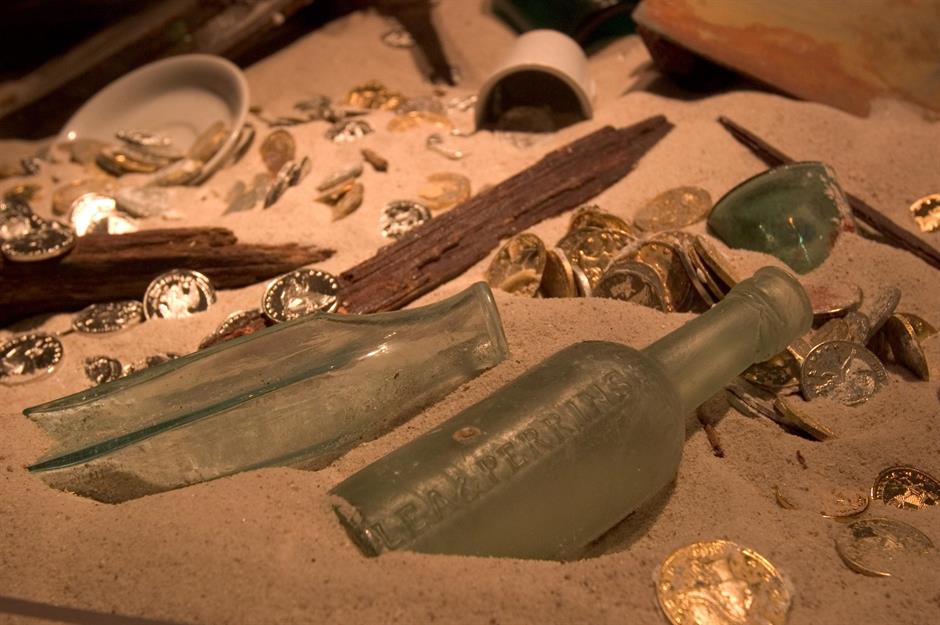
The SS Republic left New York in the aftermath of the Civil War in 1865, bound for New Orleans with a cargo of hard currency – mostly gold coins worth hundreds of millions of dollars today – to help rebuild the city.
But the paddle steamer couldn’t cope with a hurricane and went down off the coast of Georgia. The coins were salvaged in 2003 and have toured various museums in the US and around the world.
Bronze cannon, Vasa

King Gustavus Adolphus must have been livid when his new warship, the Vasa, sank within a mile of Stockholm Harbour on her maiden voyage in 1628. Most of the expensive bronze cannons were later salvaged, but the rest of the ship was left to rot until it was rediscovered in the 1950s and raised for the incredible Vasa Museum.
Those bronze cannons prove how much effort (and money) went into the Vasa’s construction – they were specially cast for the ship and could fire a 24lb (11kg) shot.
Whisky, SS Politician
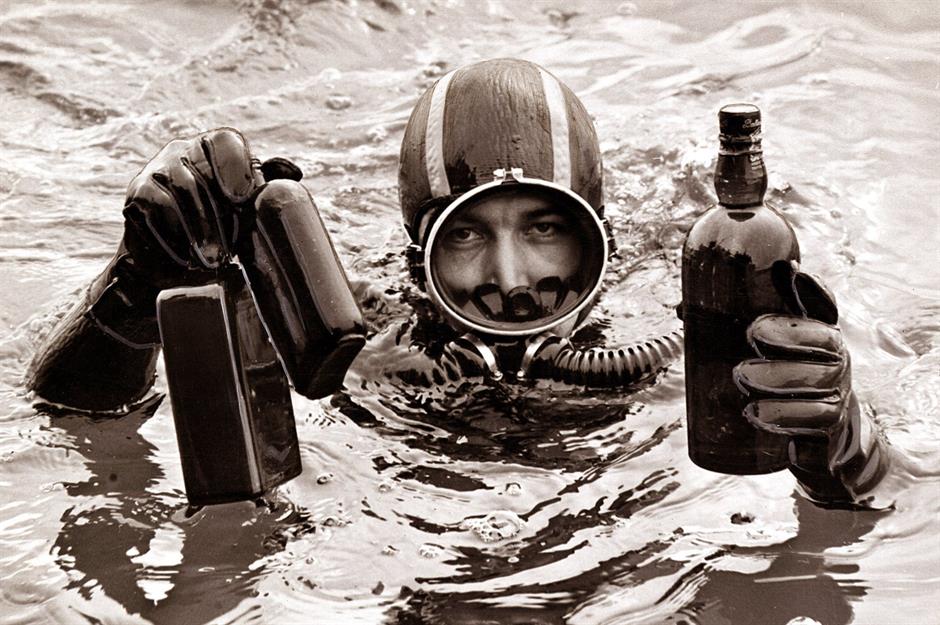
It didn’t take long for eager locals to salvage the cargo of the steamship Politician when she ran aground off the Scottish isle of Eriskay in 1941, as her hold contained 260,000 bottles of malt whisky. Customs officers pursued them for non-payment of duties, but not before a mighty island-wide party.
The events inspired a book and film – Whisky Galore! – and bottles are still occasionally found by divers.
Drinking vessels, Marsala Ship
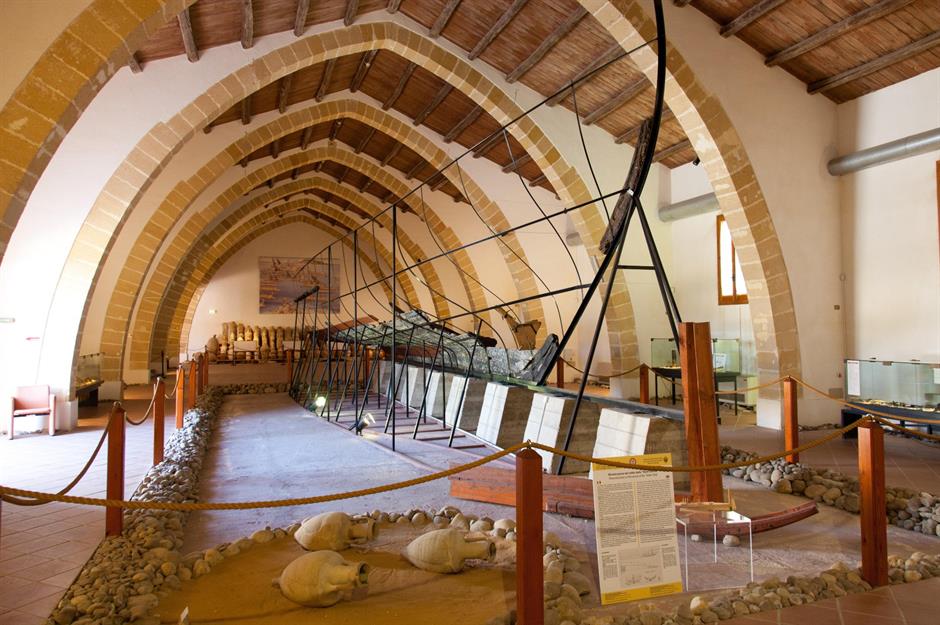
In 1971, a dredger was trawling the seabed in a harbour in Sicily and picked up something far more exciting than sand. The Marsala Ship is the oldest warship wreck in the world, having sunk around 200 BC, possibly in a sea battle between Rome and Carthage. Finds from the ship revealed that its crew caught fresh fish as well as carrying deer and oxen meat on board. Plus, every crew member appears to have had their own individual drinking cup.
The astounding wreck is currently on display at the Museo Archeologico Baglio Anselmi in Marsala.
Paddlewheel, Arabia

The Arabia was a workhorse of the American interior, steaming up and down the Ohio, Mississippi and Missouri Rivers with mail, tools and other invaluable items. It sank in 1856 when it snagged on a submerged tree and ripped its hull. The wreck was rediscovered in 1987 and, given the shifting course of the Missouri River over the intervening 131 years, it was now half a mile inland under a farmer’s field.
Over the next few months, the largest collection of pre-Civil War artefacts in the US was uncovered: there were gorgeous glass bottles (some containing still-edible pickles), beautiful beads and even weaponry. Many of these items, as well as the wreck's paddlewheel (pictured) are now in a dedicated museum in Kansas City.
Silk dress, Palmwood wreck
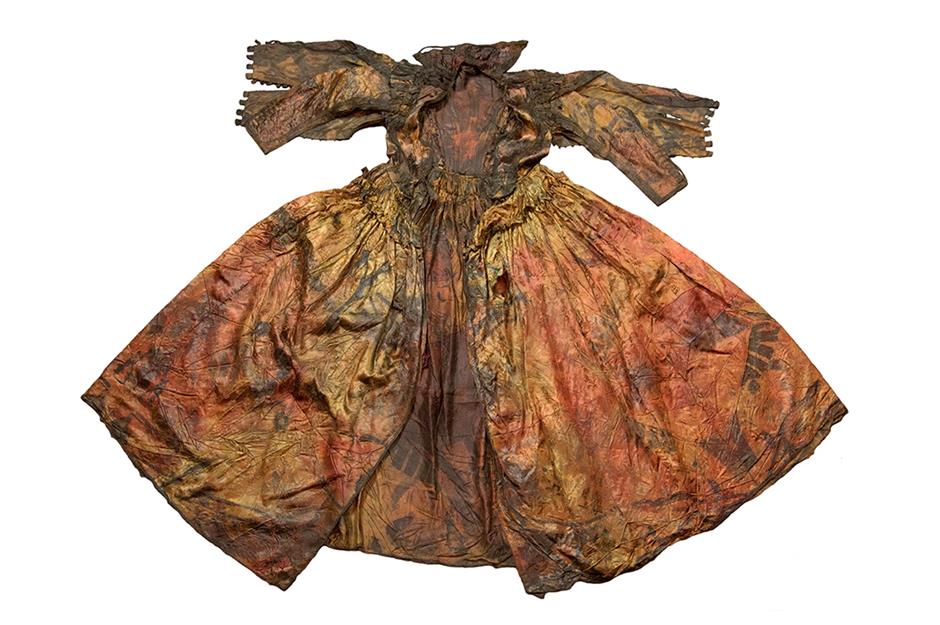
Nobody knows exactly what ship was discovered off the coast of Texel, Netherlands in 2014. But the Palmwood wreck (named after the fine palmwood chests on board) must have been an important vessel.
It carried some fine 17th-century items from England, including a silk dress and velvet purse so expensive they must have belonged to a wealthy woman – perhaps even royalty. The remarkably well-preserved objects are kept in Texel’s Museum Kaap Skil.
Kitchen stove, La Seine
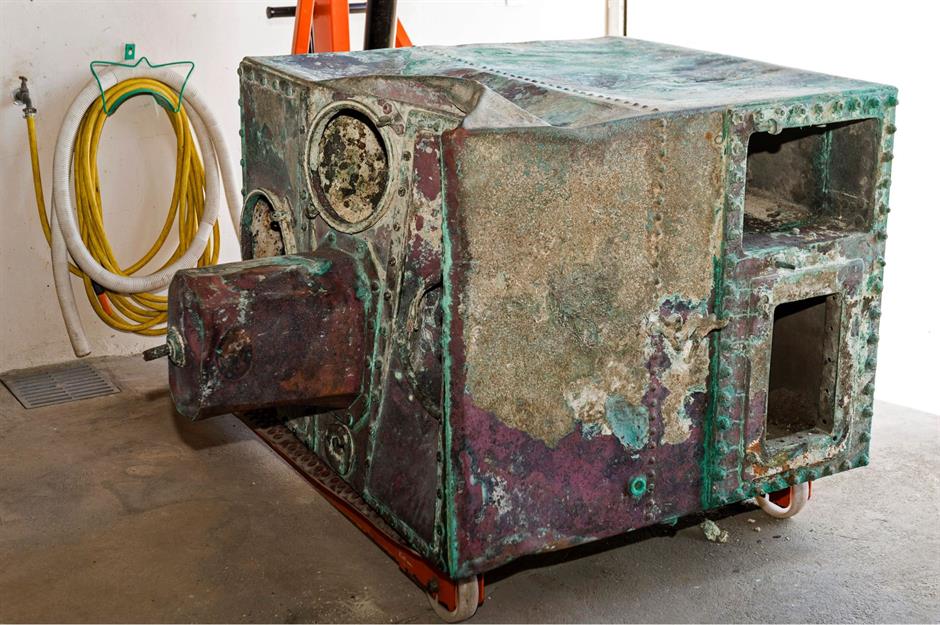
French Navy corvette La Seine was a trailblazer, but not for the right reasons – it was the first European ship to sink off subtropical New Caledonia in the Pacific Ocean, going down in 1846. An intriguing artefact was salvaged in 2016: the ship’s copper kitchen stove and water distiller.
It allowed the crew to survive long-distance voyages without stopping regularly to top up with fresh water, because salt water could be distilled and made drinkable using the heat of the stove. The ingenious invention is now kept at the Maritime Museum of New Caledonia.
Byzantine notepad, Yenikapi Ship 12
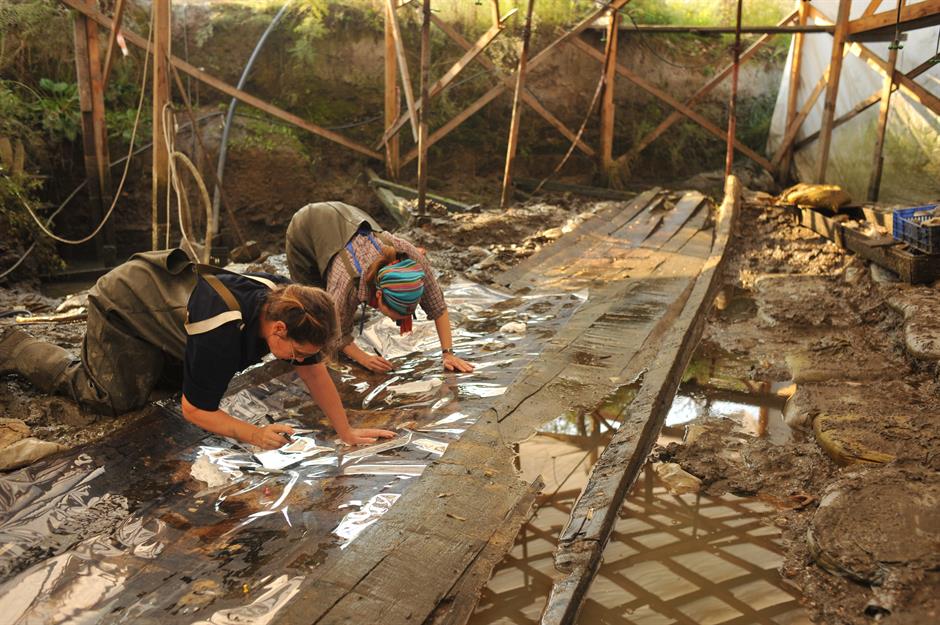
Archaeologists excavating dozens of Byzantine-era ships at Yenikapi on the edge of Istanbul, Turkey pulled up a seemingly anachronistic find from one of the wrecks: an 8th-century iPad. Sort of.
These were actually five wooden tablets fitted on top of each other which could be opened up like a notebook, allowing its owner to jot notes on wax and store things in small compartments.
Victorious Youth, unknown wreck
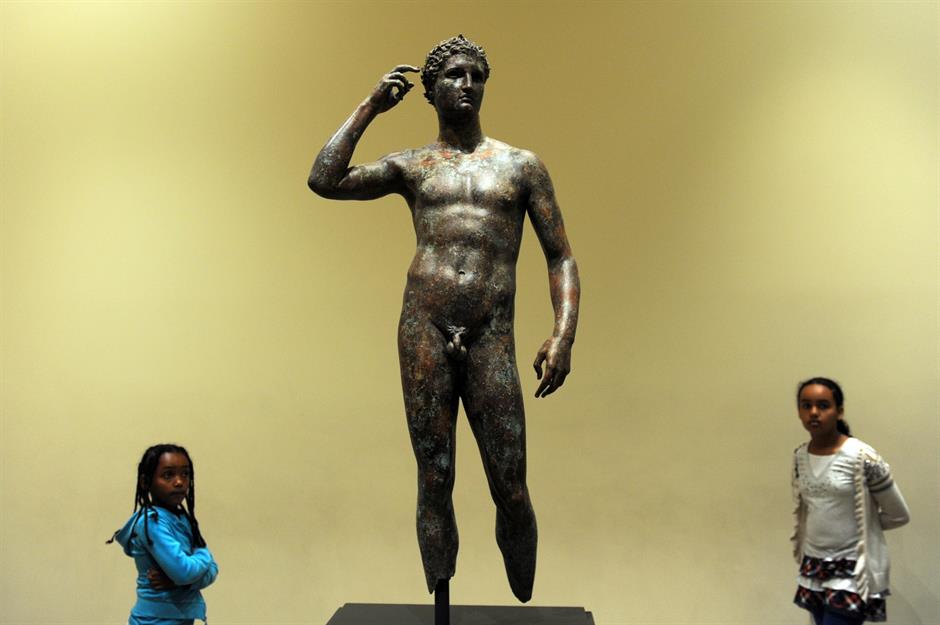
In 1964, an Italian fishing trawler found an unusual object tangled in one of its nets: a bronze statue dating to around the 4th century BC. The exact wreck it came from is unknown, but it was probably an ancient Greek vessel that foundered in the Mediterranean.
The stunning statue may have originated from Delphi or Olympia, and it’s currently housed in the Getty Museum in California. However, the Italian supreme court recently ruled that the statue should be returned to Italy, a decision the Getty Museum is appealing.
Tang pottery, Belitung wreck
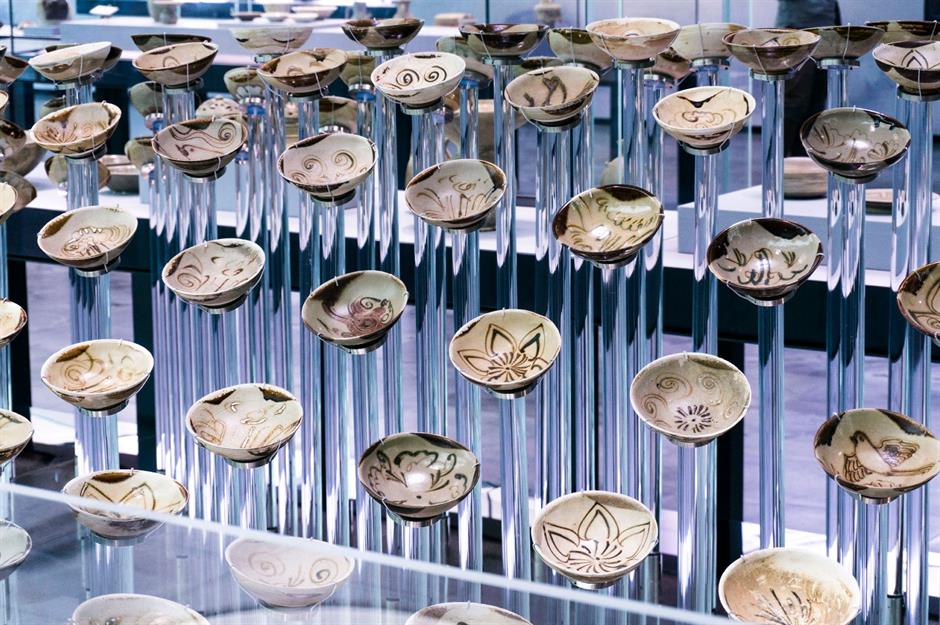
When an Arabian dhow (sail ship) sank in the 9th century AD near the island of Belitung, Indonesia, it preserved the largest collection of Tang dynasty artefacts in one location outside China. Objects plucked from the wreck include an elegant bronze mirror, gold tableware and a collection of blue and white stoneware plates and dishes.
The finds, now in the Asian Civilisations Museum in Singapore, shone a spotlight on early Chinese trade links with the wider world.
Officer’s shoe, HMS Erebus
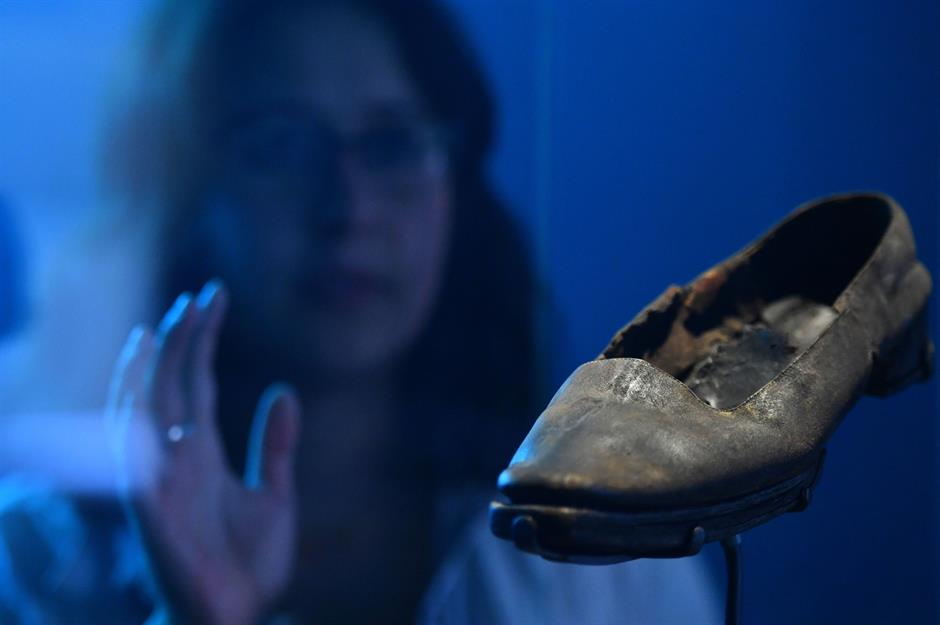
HMS Erebus was one of two ships on John Franklin’s ill-fated 1845 expedition to find a way through Canada’s Northwest Passage. The ships got stuck in the ice and the crew began a long trek to civilisation – hopefully with better footwear than this leather shoe, which got left behind and was pulled from the icy wreck in 2014.
But its owner never returned to claim it, as all of the expedition's 129 men perished over a three-year period. Many museums across Canada currently share exhibits and artefacts from the Erebus.
Ancient porcelain, Nanhai No. 1
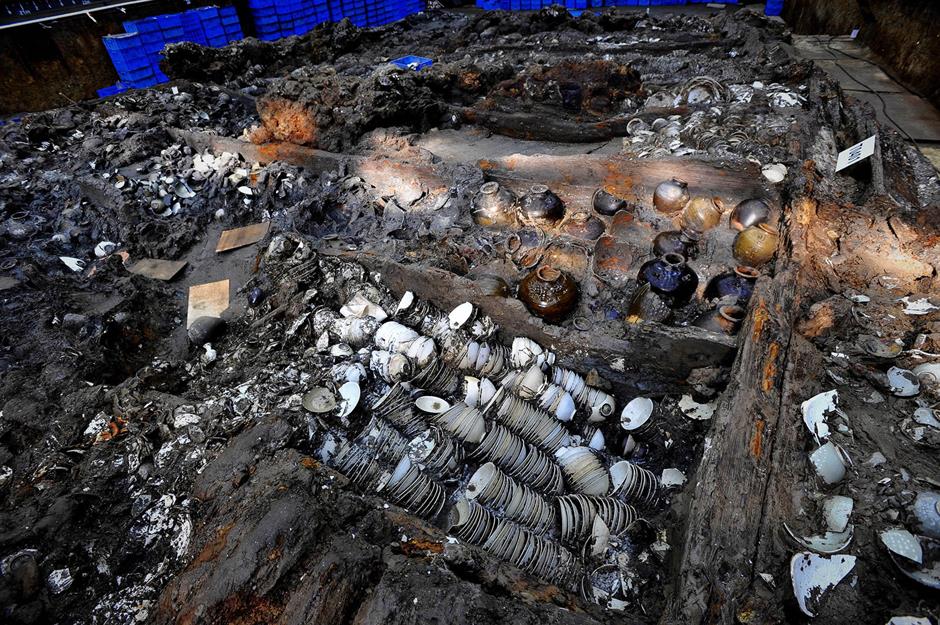
The Nanhai No. 1 was a Chinese merchant ship dating from the Southern Song dynasty that sank off the South Chinese coast between 1127 and 1279. It was discovered in 1987 and in 2007, it was recovered, with the entire wreck encased in a steel container and transported to the Guangdong Maritime Silk Road Museum.
Here, in a specially designed glass-covered saltwater chamber, archaeologists have been able to ‘excavate’ the wreck in a controlled environment, uncovering more than 60,000 artifacts – primarily porcelain from kilns in areas such as Jingdezhen, Dehua, Cizao and Longquan. Visitors to the museum can watch the archaeologists at work from a raised platform overlooking the tank.
Now discover the incredible stories of history's most tragic ships...
Comments
Be the first to comment
Do you want to comment on this article? You need to be signed in for this feature